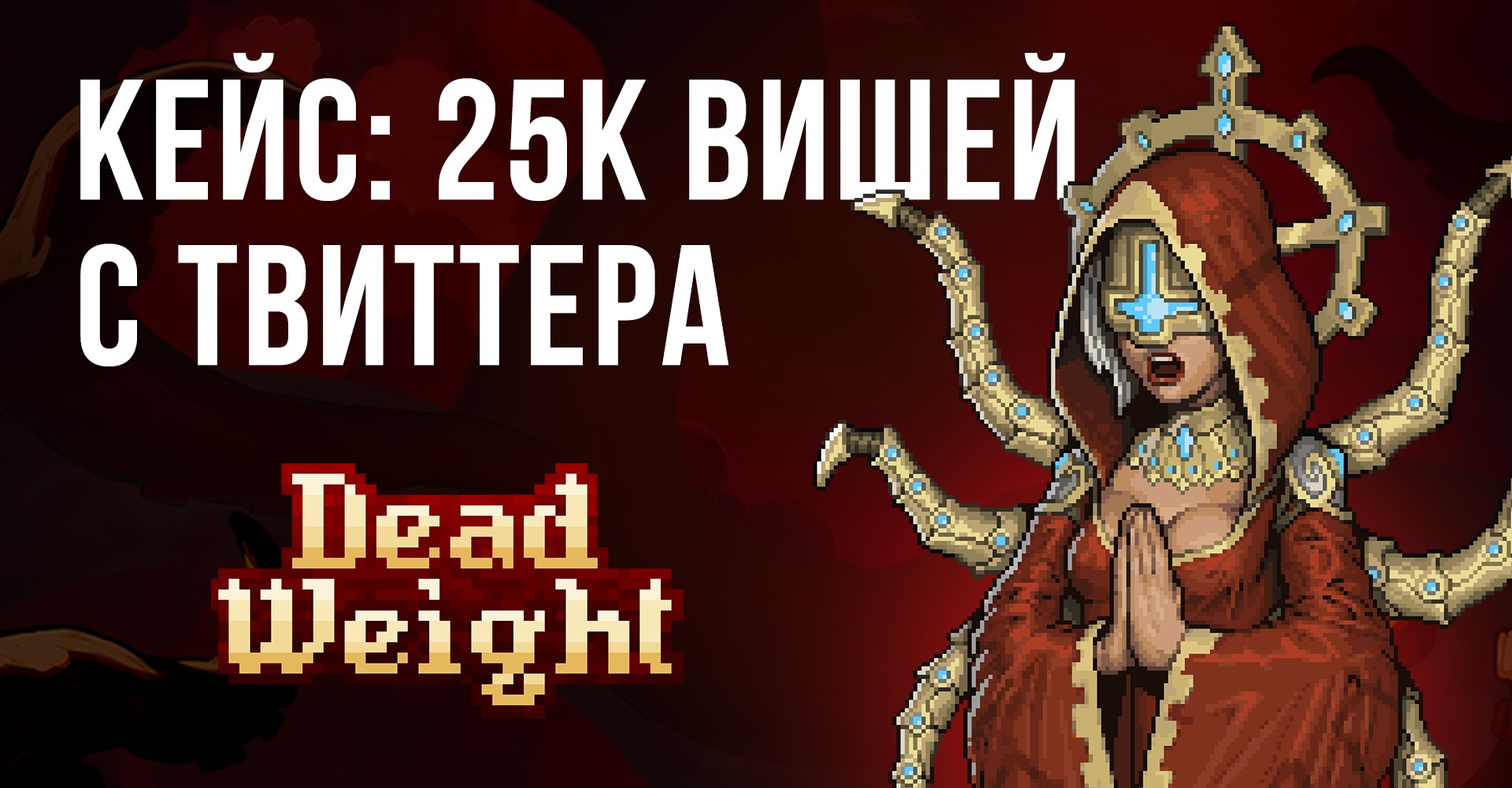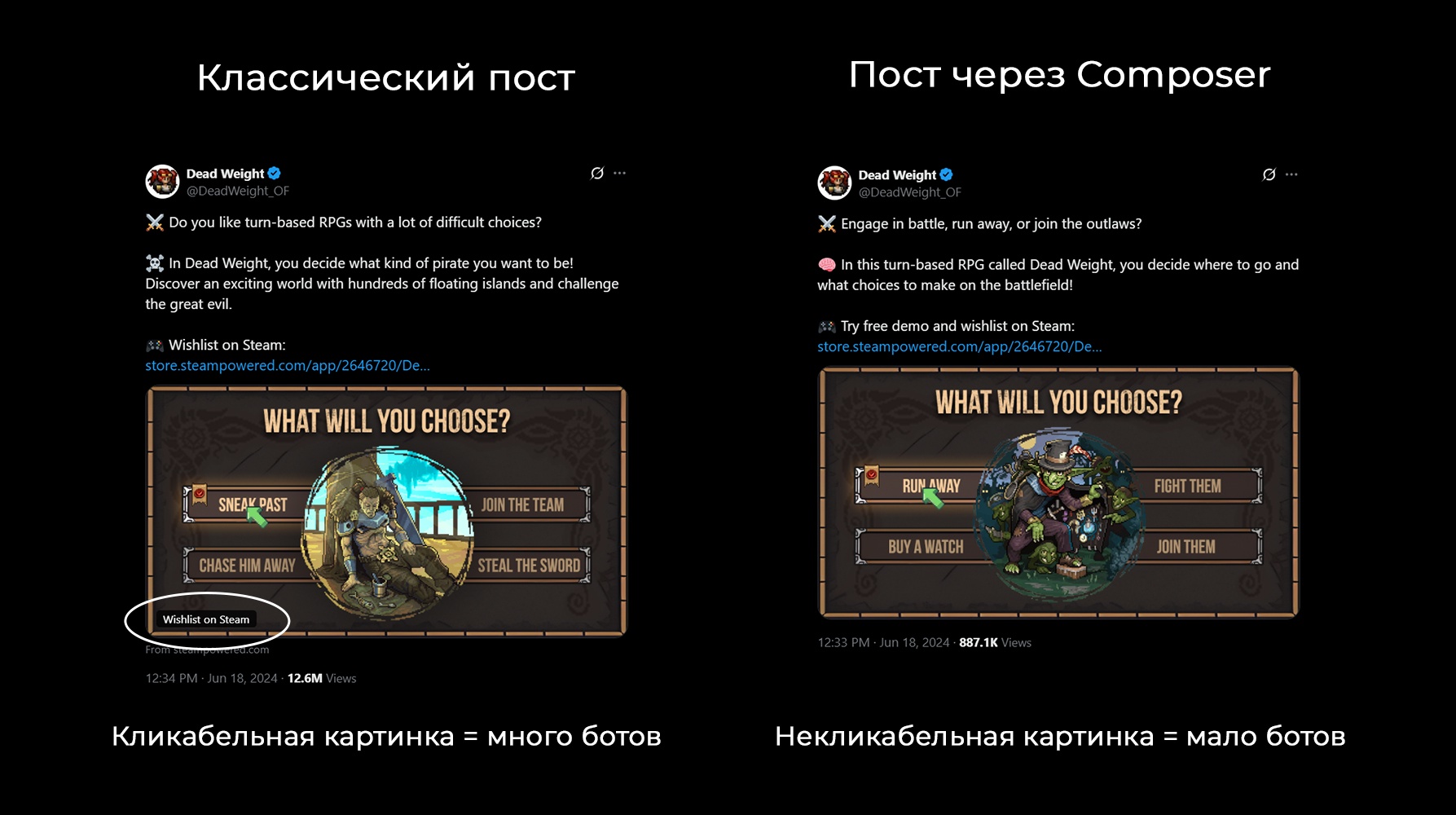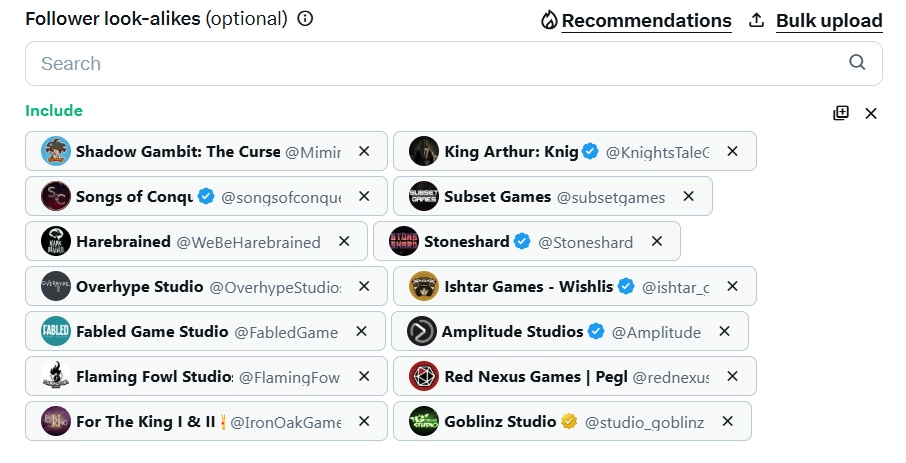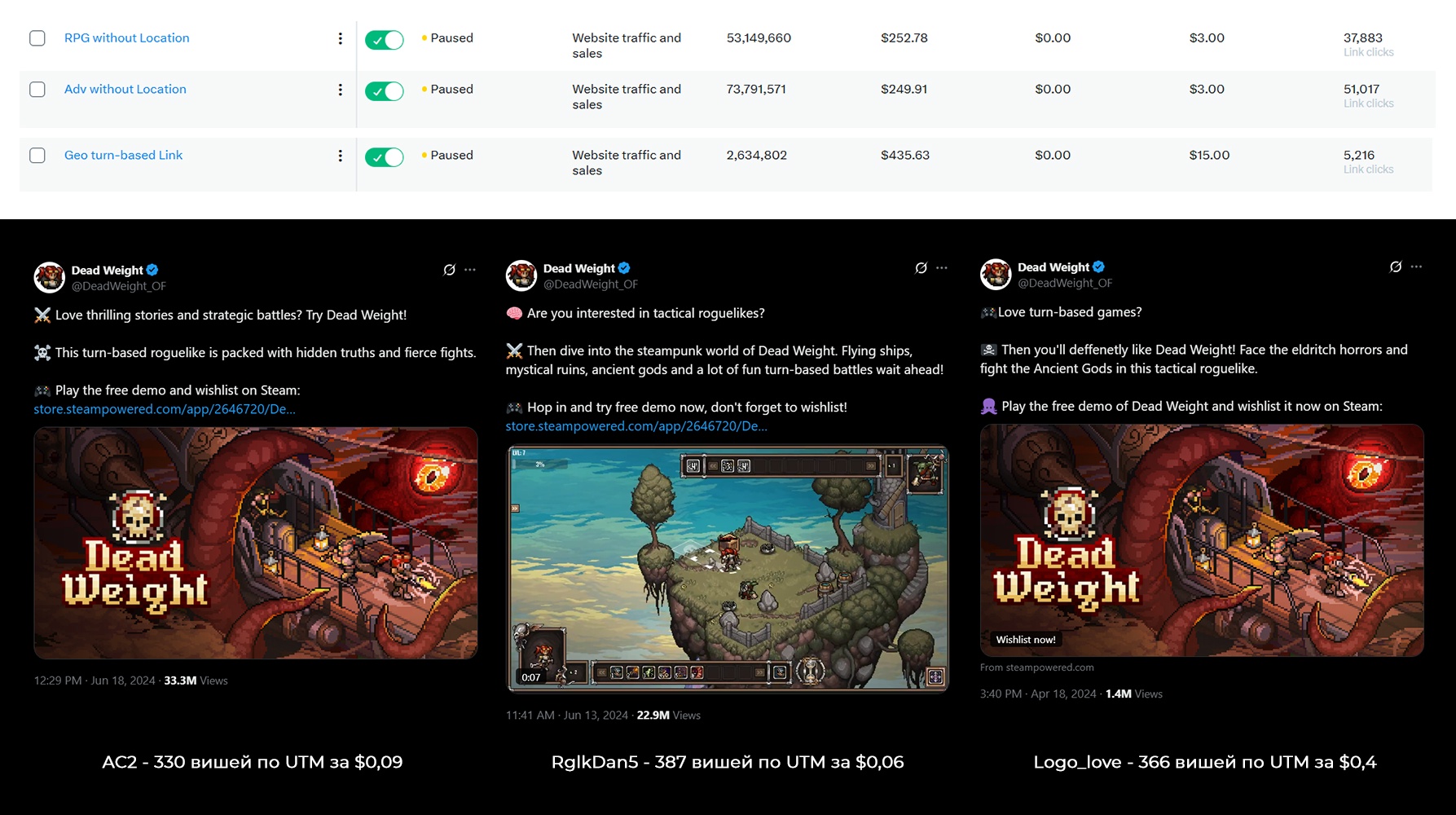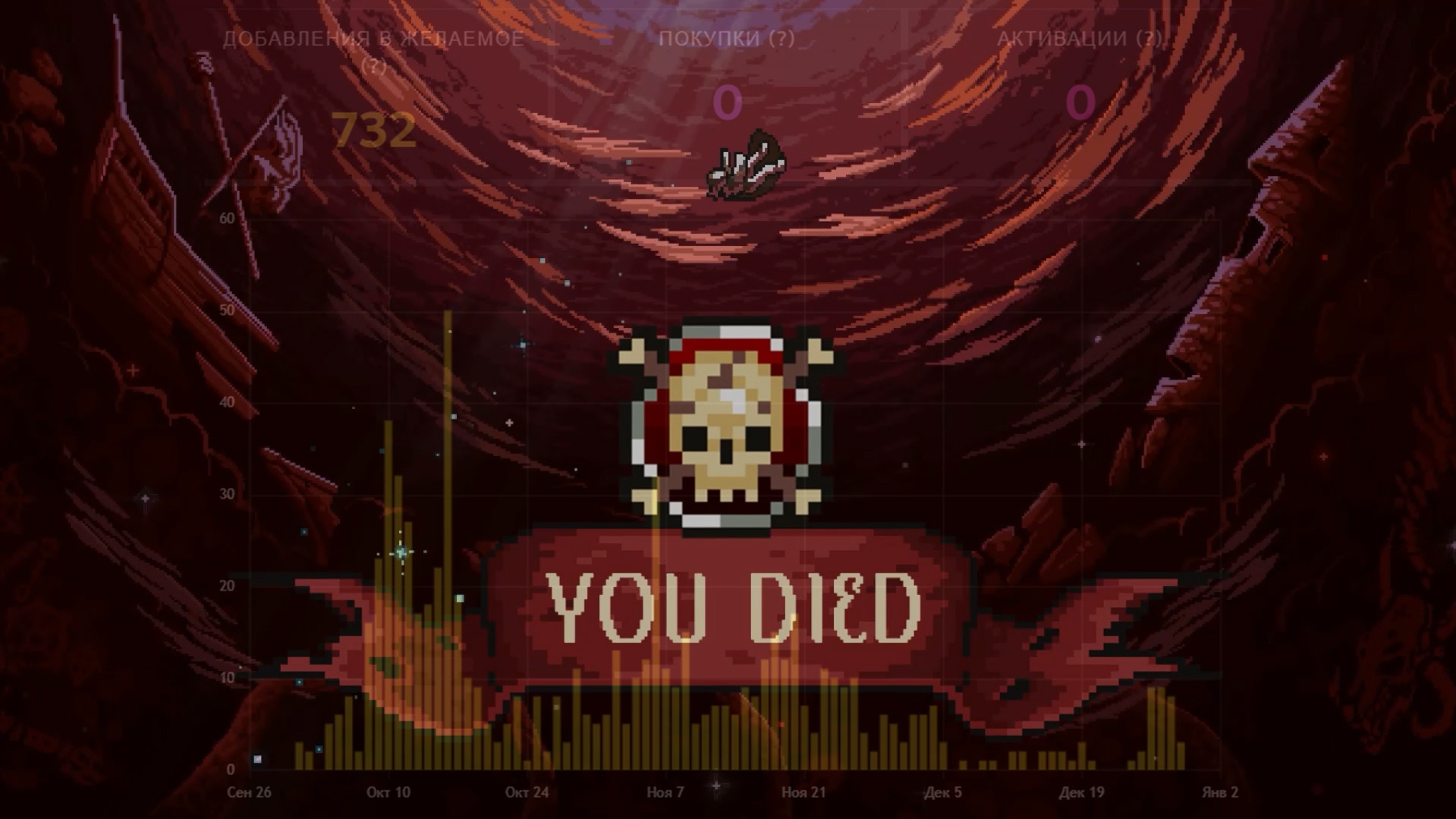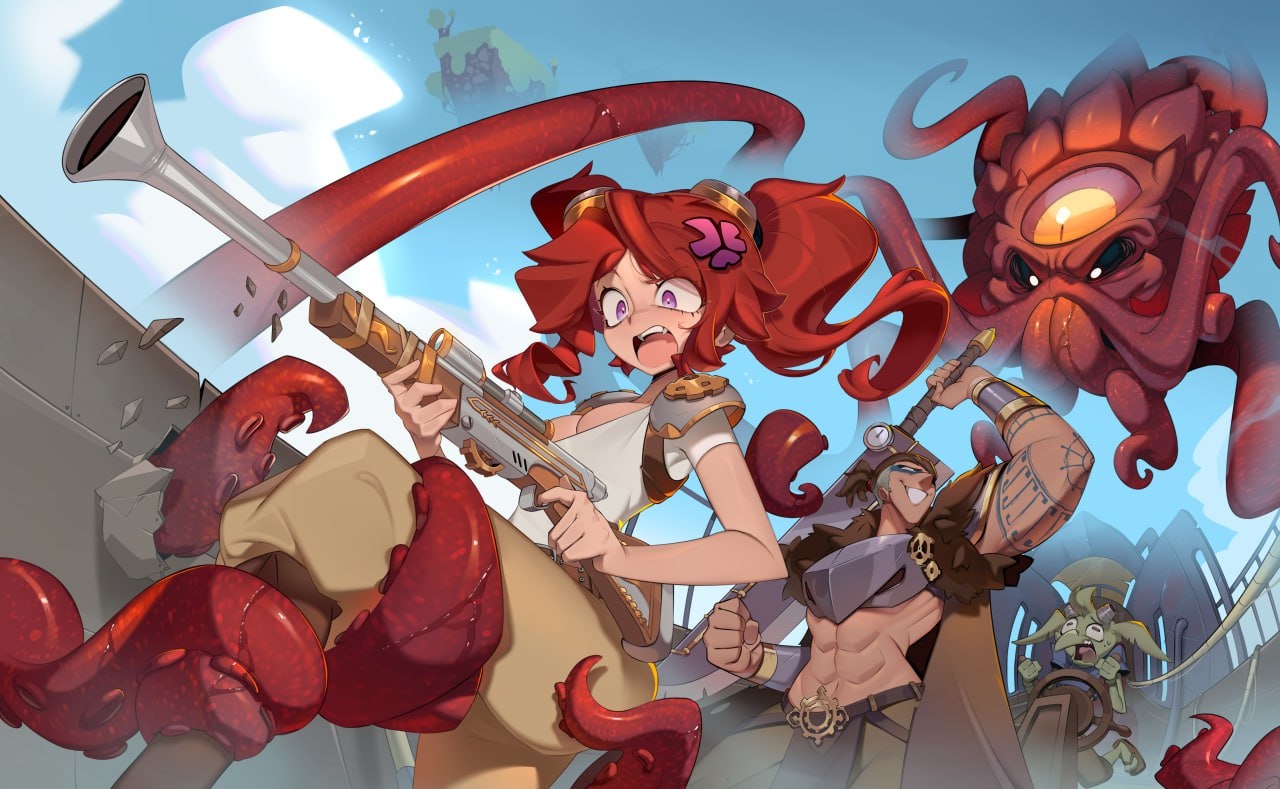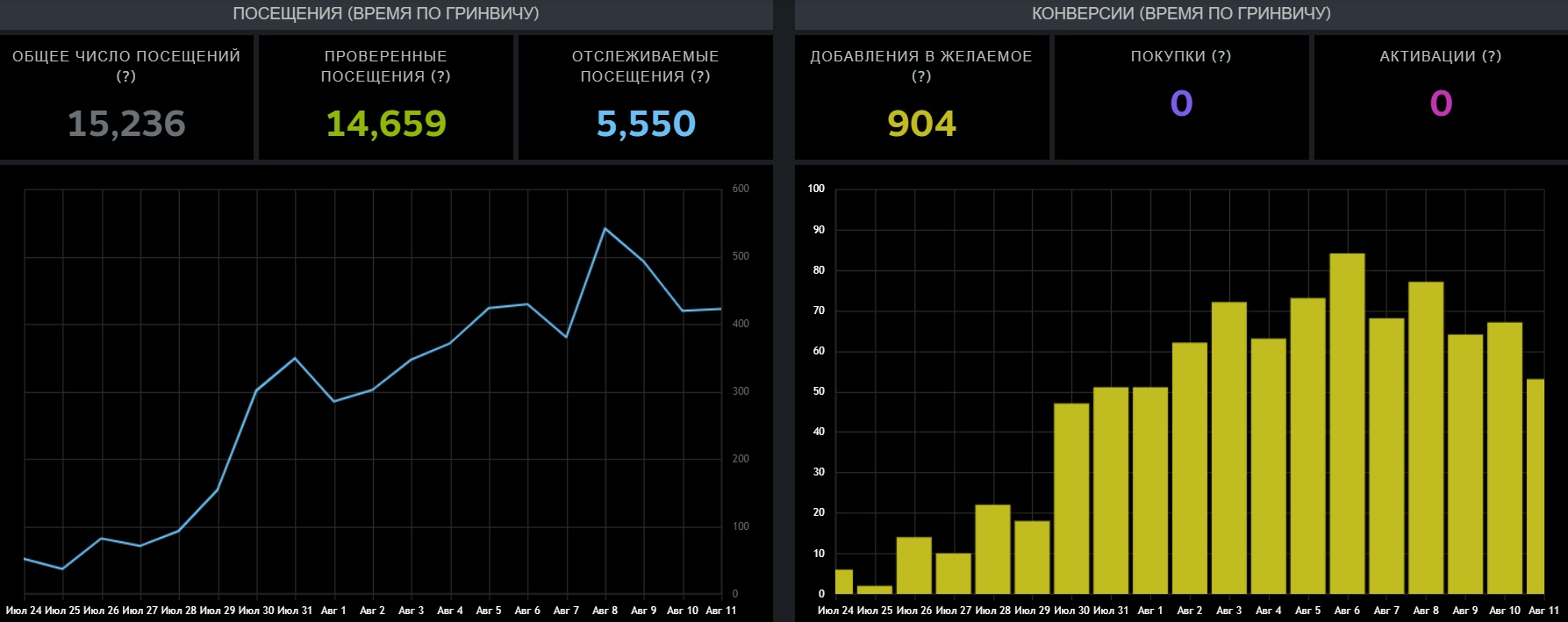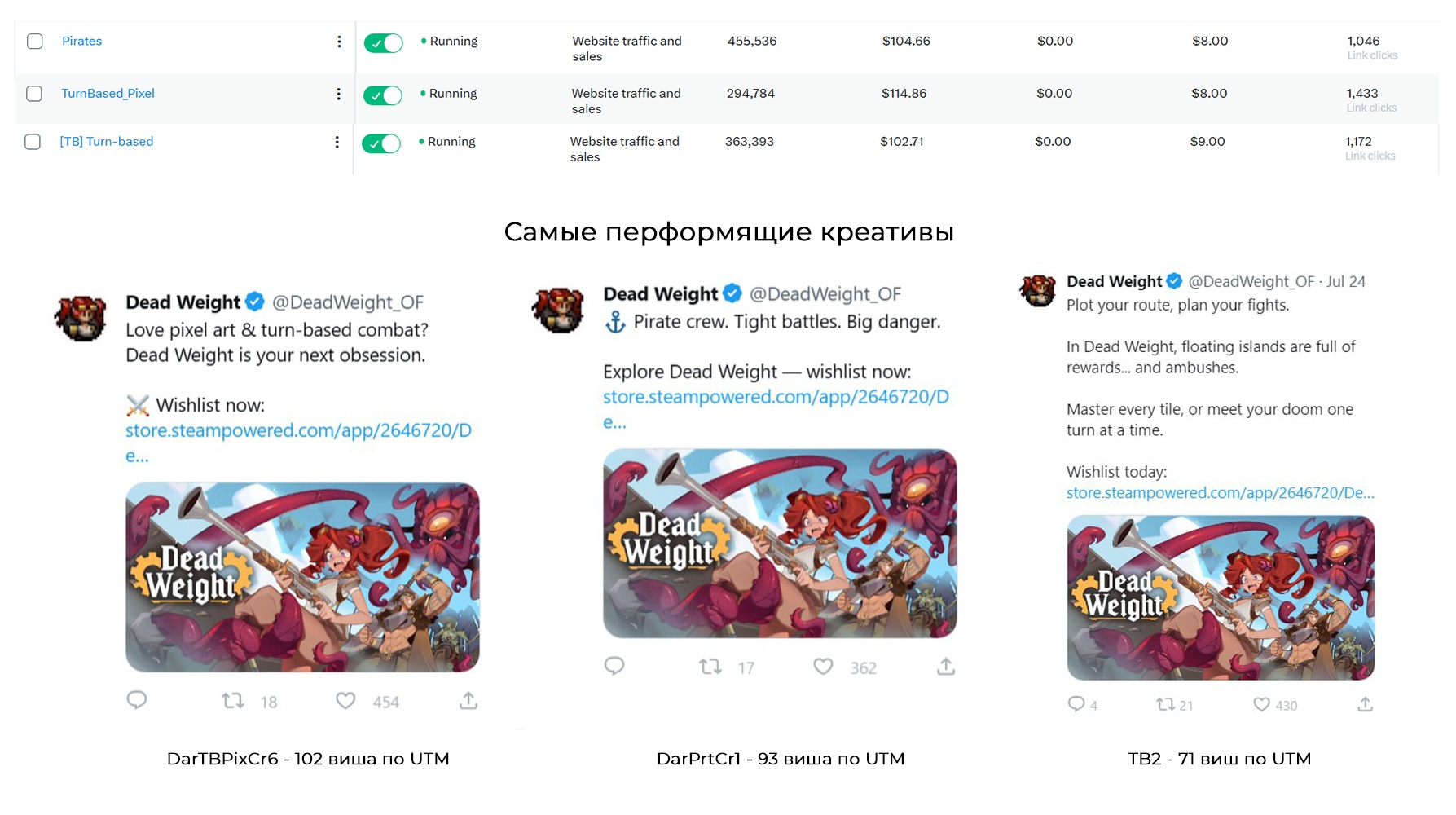The developers of Dead Weight shared a case study on how they gathered 25,000 wishlists using X
The team at Klukva Games, currently preparing for the release of the steampunk roguelike Dead Weight, shared in detail about how they gathered wishlists on social network X.
The studio's founder and author of the Telegram channel "Pasha on Wishlists" Pavel Belchenko shared this case study.
Pavel Belchenko
Klukva Games is an indie studio that loves doing marketing: we set up X, Reddit ads, apply for all festivals, make comics, and constantly test something.
Thanks to a passion for this process, we've already garnered over 73,000 wishlists for Dead Weight. We aim to reach 100,000 "wishes" by the release.
Over the past year, we have:
- improved traffic handling on client projects and our own. It's more fun working on our own, without the fear of wasting an ad budget on a silly hypothesis;
- made our standard creative mainstream in X (you've definitely seen texts following the "three paragraphs — three emojis" template);
- achieved 1 billion impressions across all projects.
The release is just around the corner. After that, sales will commence, and wishlists won't matter anymore. This is precisely the point when you can sum up the results. We'll reveal our cards and show the numbers.
Some Techniques We Love
1. Targeting Globally
X doesn't like it when you narrow down geo-targeting — you risk bad optimization and losing half of the targeted clicks. That's why we often go global. How well this works — feel free to judge in the comments, but here's a screenshot of the latest GEO settings:
Most of the wishes are from T1 countries. This can be achieved even with global targeting.
2. Eliminating Bots Using Composer
Bots in X tend to click in the standard link area. Creating creatives via Composer allows cutting off bots before the campaign starts. This way, the link moves from a special window into the text, triggering bots less.
3. Cleaning Handles
Handles are accounts on X that we target. Essentially, we throw them into Follower look-alikes as competitors. Composer cuts off bots, but not all of them. The rest are addressed by cleaning handles after the campaign starts. It's a complex and tedious topic. We'll likely explain it in a separate guide.
This is how Handles appear in group settings
What's Up with the Settings?
The three most performing ideas and hypotheses of all time (with figures, of course):
- RPG without Location — a group targeting fans of RPG games set up by interests and keywords — 730 wishlists via UTM at 0.34 cents each;
- Adv without Location — a group targeting fans of adventure games by interests — 609 wishlists via UTM at 0.41 cents each;
- Turnbased_Geo2 — a group targeting fans of turn-based games in T1 countries — 633 wishlists via UTM at 0.68 cents each.
The top three creatives of all time:
- AC2 — 330 wishlists via UTM at 0.09 cents each;
- RglkDan5 — 387 wishlists via UTM at 0.06 cents each;
- Logo_love — 366 wishlists via UTM at 0.4 cents each.
The cost per wishlist from creatives is not an error.
Regarding the AC2 creative: the AdvInt group spent a total of $249.91 and generated 609 wishes. The average wish via UTM cost us 0.41 cents. Meanwhile, there were two performing creatives that produced the majority of wishes — at 0.1 cents each, while other creatives provided wishes at 0.7 cents.
Why didn't we disable them?
In X, there's an important rule: if it works, don't touch it. This helps avoid disrupting the group's optimization.
And finally, to "flex" a bit — here's a screenshot of all the wishlists via UTM — nearly 14,000 in total.
All wishes from X traffic
Why does it show 14,000 instead of 25,000?
First, Steam loses part of the wishes via UTM, and a significant portion at that. Not many know this, but the actual wishes = UTM wishes x 1.5-2.
How did we figure this out? In our overall statistics, the peaks of wishes and UTM match, but ultimately, the wishlists differ greatly. And yes, we also accounted for organic sources. As a result, we identified a coefficient of 1.7 to calculate the overall number of "wishes."
Second, we've become recognizable: YouTubers started reviewing Dead Weight and writing about us. Angory Tom, GameBible, TurnBased Lovers, and a couple of Thai sites brought us over 3,000 "wishes."
Initially, We Didn't Want to Share This Case
The main reason was that last September everything came to a halt. Campaigns burned out, nothing worked, and we couldn't fix it.
But...
We managed to revive the traffic after six months.
What helped:
- a new capsule — we commissioned a capsule from a top artist we had been waiting 18 months for, and it attracts attention excellently. The top creatives of the new campaign feature it;
- a fresh team perspective — after many brainstorming sessions and sleepless nights, we reassembled hypotheses, changed our approach to texts (short texts are the way!), and found those very approaches that work;
- meticulously selecting Handles — we became more attentive in analyzing handles and their audiences to select potentially performing ones.
Our new capsule
Between 24.07 and 11.08, our daily project spending reached $50-60, and we started to haul 70-80 wishlists via UTM at 0.7 cents each, and the best part — almost all "wishes" came from T1 countries!
Total spending over two weeks
The number of wishes over two weeks
Geo settings over the last seven days
What Conclusions Can We Draw from This?
1. New Hypotheses and Brainstorms
Periodically test different ad formats and new hypotheses. Keep the most effective ones in reserve. If you're short on ideas, organize brainstorming sessions or seek advice from industry peers.
2. A New Capsule = New Results
Regularly update the capsule and visuals in the campaign to overcome user banner blindness. Important: don't design the capsule solely in-house. Sometimes it's more effective to hire a couple of top artists to create the capsule. Different approaches to the capsule can showcase the project from various angles.
3. Test Many Ideas
This is our standard conclusion, and it hinges on settings we've seen indie developers use during consultations. Be prepared to create 10-15 different settings per month: 1 setting = 1 hypothesis.
Bonus settings we use in every project:
- Goal — website traffic with a target cost of 0.12-0.18 cents;
- Countries — we rotate globally, without limiting the campaign;
- The average audience for each group — 200-300 thousand, with a couple reaching a million;
- Handles — we primarily choose medium and small (10-50 thousand) relevant to the hypothesis, with a couple of large ones (over 100 thousand);
- Interests and keywords — not used, as they currently don't work;
- For one group test, we limit the audience — 18 years and older.
